Tick Tock, Ticks!
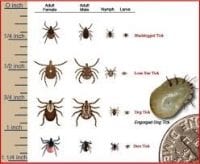 It’s tick time. Summertime is the time of the year to enjoy the outdoors. It’s also the time when the habitats of children and ticks overlap. Whether you enjoy hiking or camping in the Great Smoky Mountains like my kids and I do or playing in the backyard with your kids and pets, you may be exposed to ticks. Ticks can transmit disease and depending where you live or visit in the USA, different diseases can be spread by tick bites.
It’s tick time. Summertime is the time of the year to enjoy the outdoors. It’s also the time when the habitats of children and ticks overlap. Whether you enjoy hiking or camping in the Great Smoky Mountains like my kids and I do or playing in the backyard with your kids and pets, you may be exposed to ticks. Ticks can transmit disease and depending where you live or visit in the USA, different diseases can be spread by tick bites.
Here in the Appalachian Mountains, the most common is Rocky Mountain Spotted Fever transmitted by the dog tick, which is about 1/2 inch in size. Over towards Nashville and the Cumberland Plateau, Ehrlichiosis is more commonly spread by a variety of ticks. In the Northeast and Upper Midwest, Lyme disease is the most commonly transmitted tick borne disease. It’s spread by the small tick called Ixodes scapularis which is about the size of a pinhead. All over the Southeast, there is a newer illness called STARI which is the Southern Tick Associated Rash Illness spread by the Lone Star tick – also about ½ inch in size.
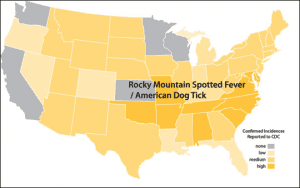
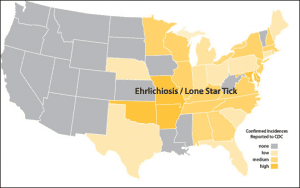
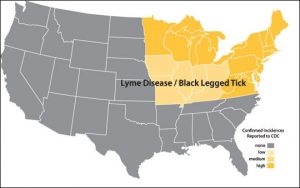
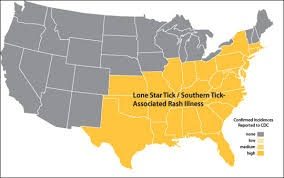 Once a tick is attached and feeds on you for at least 72 hours, the little buggers can transmit these diseases. Most symptoms that you will encounter are fever, headache, nausea, muscle or joint pain and rash. Think of it as summertime flu symptoms. Most symptoms start anywhere from 2 to 14 days after the bite.
Once a tick is attached and feeds on you for at least 72 hours, the little buggers can transmit these diseases. Most symptoms that you will encounter are fever, headache, nausea, muscle or joint pain and rash. Think of it as summertime flu symptoms. Most symptoms start anywhere from 2 to 14 days after the bite.
How can you help prevent tick bites? Be aware of the areas where ticks live. Most ticks prefer dense woods with thick growth of shrubs and small trees as well as along the edges of woods where the woods abut lawns. Ticks require humidity to survive, and drier areas usually are less infested. When outdoors your child should wear long-sleeved shirts tucked into his or her pants. The pants should be tucked into socks or boots. Use an insect repellent containing permethrin on clothing to repel ticks and other insects but don’t apply this to skin. DEET containing products from 5-30% helps prevent both ticks and mosquito but don’t use it on babies under 2 months of age. During a hike or camping, do tick checks using a buddy system every 4 hours. After a full day do a bare skin check and shower to remove any ticks that are not firmly attached.
Tick bites are painless and don’t itch. Favorite hiding places for ticks are in the hair, so check the scalp, neck, armpit and groin. To remove a tick, get a tweezer and apply pressure right behind the head and lift straight up after it releases. If any part of the tick is still there, scrape it off and then wash with soap and water. Also check your pets, especially dogs for ticks daily. You can save the tick for inspection later by keeping it in a glass jar. More on tick removal from the AAP.
Remember, if you develop any of these symptoms such as fever, rash or headache after a tick bite, please call your pediatrician’s office. How to treat tick bites.
